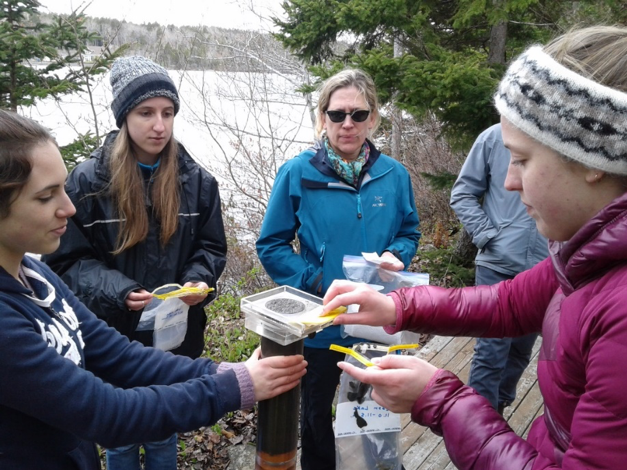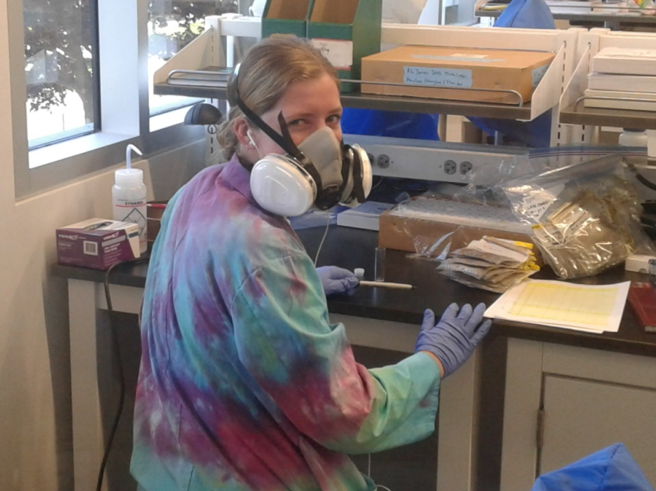Research study shows long-lasting impacts to lake health from old gold mines

HALIFAX, NS and SACKVILLE, NB — New findings of a multi-university team of researchers show that pollution from historical gold mining in Nova Scotia, Canada, persists at levels that impact the health of aquatic ecosystems, despite mine operations closing nearly a century ago.
“Past mining activities that occurred throughout Nova Scotia introduced considerable amounts of arsenic and mercury into the environment,” says lead author Allison Clark, BSc (honours) 2020 graduate from Mount Allison University. “Although the Montague Gold District closed to mining 80 years ago, lakes nearby still remain severely impacted.”
Over 350 gold mines operated throughout Nova Scotia between the mid-1800s and 1950. Urbanization and land development has taken place nearby some historical mining areas and people sometimes use these areas for recreational activities. Waste tailing materials with elevated and potentially toxic levels of arsenic and mercury often are associated with historical gold mining sites in Nova Scotia. The tailings can contaminate soil and aquatic sediments through water and wind movement.

This study used dated sediments from the bottom of two urban lakes located near one of the region’s largest historical mining operations. Lake sediments are a well-recognized and information-rich natural archive of past environments which allow the assessment of geochemical and biological conditions of lakes and their watersheds before, during, and after pollution has occurred.
The study, led by researchers at Mount Allison and Saint Mary's universities, was recently published in the peer-reviewed international journal Science of the Total Environment and highlights how pollution from past gold mining combined with contemporary stressors such as climate change and urbanization may contribute to prevent complete lake recovery from century-old mining pollution.
“Mining activities from 100 years ago can still impact freshwater ecosystems today. Our work reveals that lakes may show signs of recovery from those impacts,” notes Saint Mary’s University Professor and co-author Dr. Linda Campbell. “Even so, we must remain vigilant about understanding and monitoring the legacy of those contaminated tailings in our modern ecosystems to support recovery processes.”
Currently, arsenic levels are still very high in the lake sediments—300 times above levels that are known to harm aquatic organisms. Mercury has returned to levels observed before gold mining began. This suggests that arsenic is behaving differently than mercury within the sediments at the bottom of tailing-impacted lakes.
“Mining is both a blessing and a curse,” notes Mount Allison University Associate Professor (Geography and Environment) and co-author Dr. Joshua Kurek. “Society benefits but past mining activities practiced throughout Nova Scotia continue to harm ecosystems and citizens are now left with the clean-up costs.”
Additionally, invertebrates that live on and interact with the lake’s sediment have become less diverse compared with a similar reference lake, likely due to the mining pollution as well as other recent watershed stressors. Loss of key organisms may affect lake food webs, leading to issues with water quality.
Funding for this research was provided by Natural Sciences and Engineering Research Council of Canada (NSERC) and Genome Atlantic.
A copy of the study can be obtained from the Science of the Total Environment website or by contacting the corresponding author jkurek@mta.ca
Photo captions: Lead study author Allison Clark (Mount Allison BSc honours ’20 in the field with the research team, far right, and in the lab)




